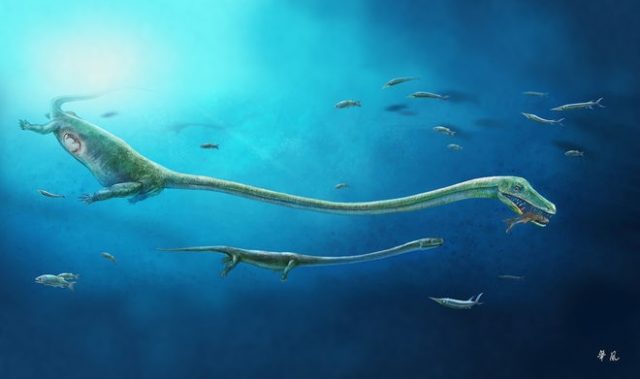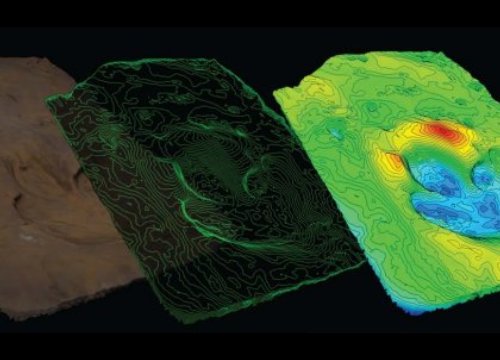
AsianScientist (Jan. 10, 2013) – Australian paleontologists have discovered that the world’s only recorded dinosaur stampede is largely made up of the tracks of swimming rather than running animals.
The new study, published in this month’s Journal of Vertebrate Paleontology, was led by University of Queensland Ph.D. candidate Anthony Romilio.
Romilio says the 95-98 million-year-old small dinosaur tracks at Lark Quarry Conservation Park in central-western Queensland are preserved in thin beds of siltstone and sandstone deposited in a shallow river when the area was part of a vast, forested floodplain.
“Many of the tracks are nothing more than elongated grooves, and probably formed when the claws of swimming dinosaurs scratched the river bottom,” Romilio said.
“Some of the more unusual tracks include ‘tippy-toe’ traces – this is where fully buoyed dinosaurs made deep, near vertical scratch marks with their toes as they propelled themselves through the water,” he said.
According to Romilio, if the tracks were made by running or walking animals, one would expect to see a much flatter impression of the foot preserved in the sediment.
Skartopus australis tracks. Romilio et al. 2013 from The University of Queenslandon Vimeo.
Romilio said that similar looking swim traces made by different sized dinosaurs also indicated fluctuations in the depth of the water.
“The smallest swim traces indicate a minimum water depth of about 14 cm, while much larger ones indicate depths of more than 40 cm,” Romilio said.
Romilio said the swimming dinosaur tracks at Lark Quarry belonged to small, two-legged herbivorous dinosaurs known as ornithopods. The smaller ones were were no larger than chickens, while some of the wading animals were as big as emus, he said.
The researchers interpreted the large spacing among many consecutive tracks to indicate that the dinosaurs were moving downstream, perhaps using the current of the river to assist their movements.
Given the likely fluctuations in water depth, the researchers assume the tracks were formed over several days, maybe even weeks.
“Taken together, these findings strongly suggest Lark Quarry does not represent a ‘dinosaur stampede’,” Romilio said. “A better analogy for the site is probably a river crossing.”
The article can be found at: Romilio A et al. (2013) Reevaluation of the Lark Quarry dinosaur tracksite (Late Albian-Cenomanian Winton formation, Central-western Queensland, Australia): No longer a stampede?
——
Source: UQ; Photo: Romilio A/UQ.
Disclaimer: This article does not necessarily reflect the views of AsianScientist or its staff.












